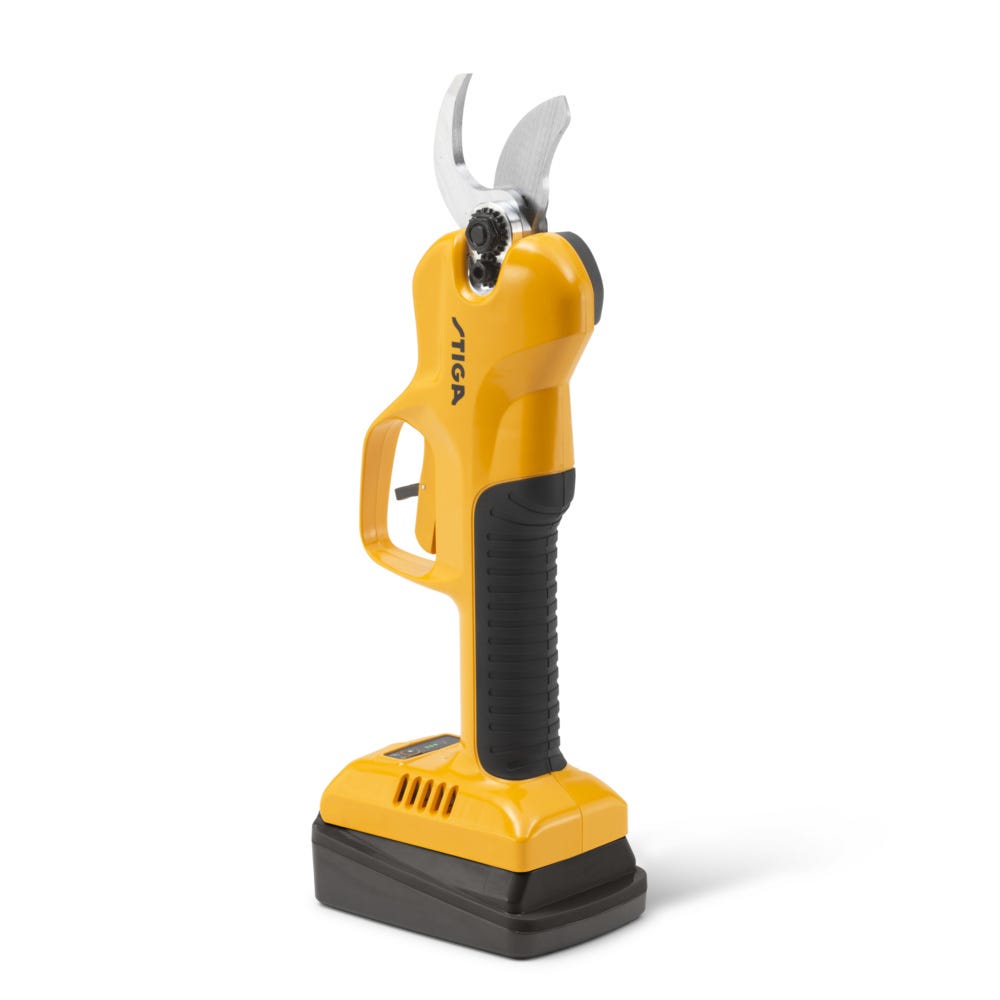
Which plants to prune in February
1. Aromatic plants
Woody herbs such as sage and rosemary require light pruning once a year, preferably in autumn or at the end of winter. These herbs tend to become more woody over time, with the risk of producing fewer leaves. Light pruning with precise cuts allows you to control plant growth and maintain a compact shape. The SC 100e pruning shears allows you to make precise cuts to remove dead branches and encourage vigorous growth.
Be careful not to cut too much: over-pruning can damage the plant; limit yourself to removing no more than a third of the volume of branches and leaves.
2. Small fruit trees
With winter now behind us and spring just around the corner, February is the ideal time to prune a wide range of fruit trees. For trees that have flowered in December and January, pruning will focus on any dead or damaged branches that have occurred during the winter. The precision of the STIGA pruning shears will allow you to make targeted and precise cuts without compromising the health of the tree.
Plants that can be pruned in February include pome trees such as apple, pear and quince, which are very hardy, as well as stone trees such as almond, peach and apricot.
The STIGA SC 100e kit makes February pruning an efficient and safe experience, ensuring that your garden will flourish in the spring.
Which plants to prune in March
How to prune roses
Pruning roses requires technique and knowledge, but don't worry, the basic principles are the same for all varieties! By using the cordless pruning shears SC 100e and following simple steps, you will achieve optimal results. Cut above a bud with angled, clean cuts so as not to damage the plant.
1) Choose the right time: in winter or early spring, before the plant is actively growing.
2) Adapt pruning to the variety: look for specific information on the care of your roses.
3) Keep your tools well cleaned and disinfected to prevent diseases and ensure precise and healthy cuts.
The STIGA SC 100e pruning shears is perfect for pruning roses: it offers a precise cut of up to 3 cm branch diameter, ensuring effective and effortless pruning.
With the right knowledge and the right tools, you will get lush and healthy plants.
Prepare your garden for an explosion of colour!
How to proceed with winter pruning of the vineyard
Winter pruning of the vine is essential to prepare it for the new season. It is recommended in winter, but the precise time varies depending on the climate zone.
Here are some tips:
- Use the pruning technique appropriate to the training form and objectives:
- Training pruning (to establish the structure of the plant)
- Maintenance pruning (to remove damaged or diseased branches)
- Renewal pruning (to stimulate the growth of new branches) - Remove dead or damaged branches, starting with the oldest at the base to stimulate the growth of new shoots, and remove crossed or inner branches;
The cordless pruning shear SC 100e is ideal for fast and precise cutting up to 30 mm in diameter; Pruning your vineyard becomes simple and safe!
Which plants to prune in April
How to prune tulips
Tulips are among the most popular spring flowers, but their beauty and vitality depend on proper care, including pruning.
Here are some practical tips to help you prune your tulips:
- Tulips should be pruned after the flowers have wilted and the stems have yellowed (usually in spring after the flowering). Our cordless pruning shear SC 100e is ideal for fast and precise pruning !
- Once wilted, remove tulips by cutting the stems at the base of the plant: this prevents the plant from wasting energy on seed production and encourages the formation of larger, healthier bulbs.
- Avoid cutting the leaves after flowering: the leaves continue to photosynthesise and produce energy for the bulbs, which is essential for the plant's long-term health.
- After flowering, continue to provide the tulips with adequate water and support. Make sure the soil is well-drained and that the plants get plenty of sunlight.
- After flowering, you can feed the tulips with a balanced fertiliser to promote the health of the bulbs and prepare them for next year's flowering.
After flowering, allow the tulips' leaves to turn yellow naturally.
You can then remove the bulbs from the ground and store them in a cool, dry place until the next planting in the autumn.

